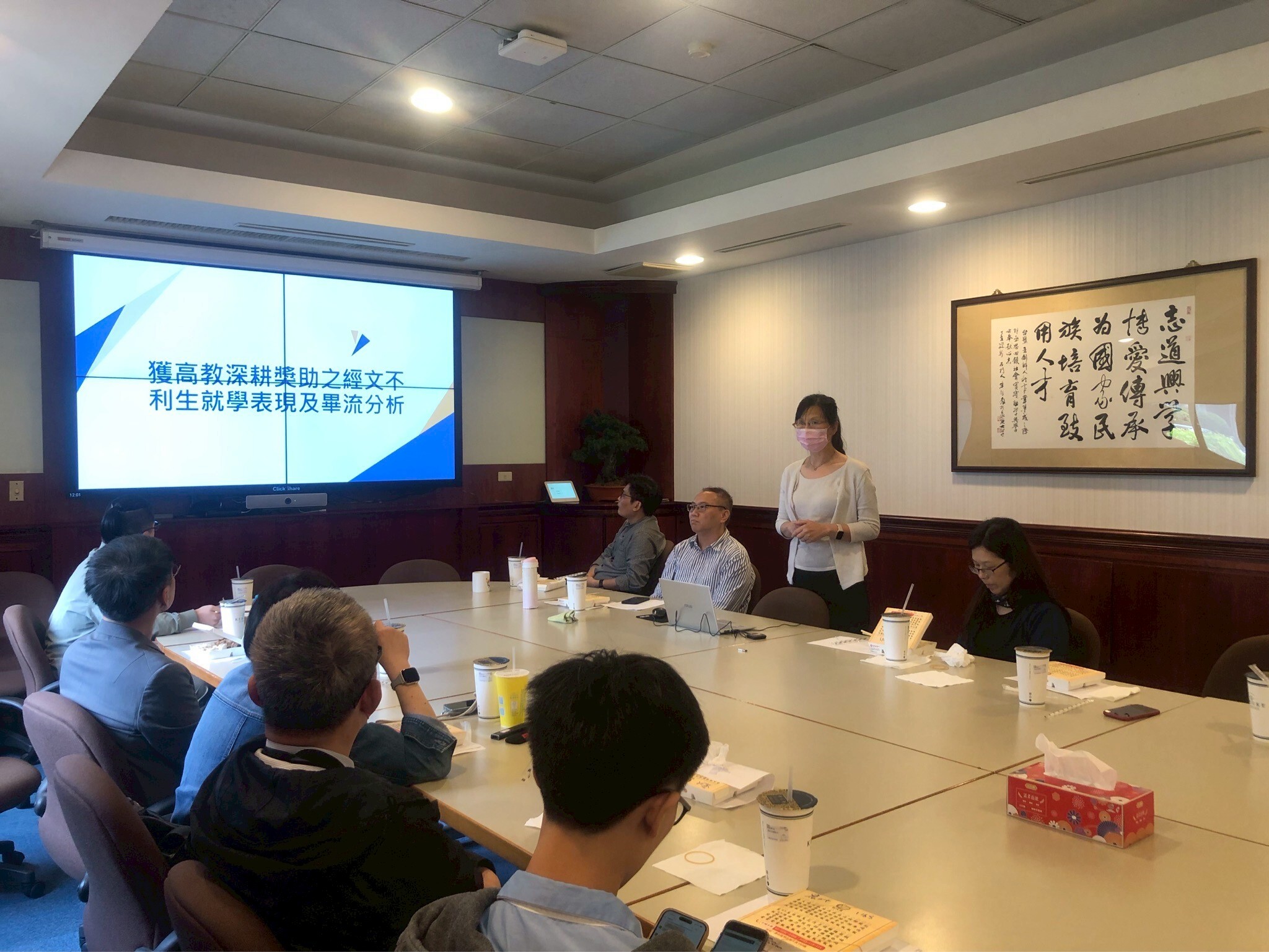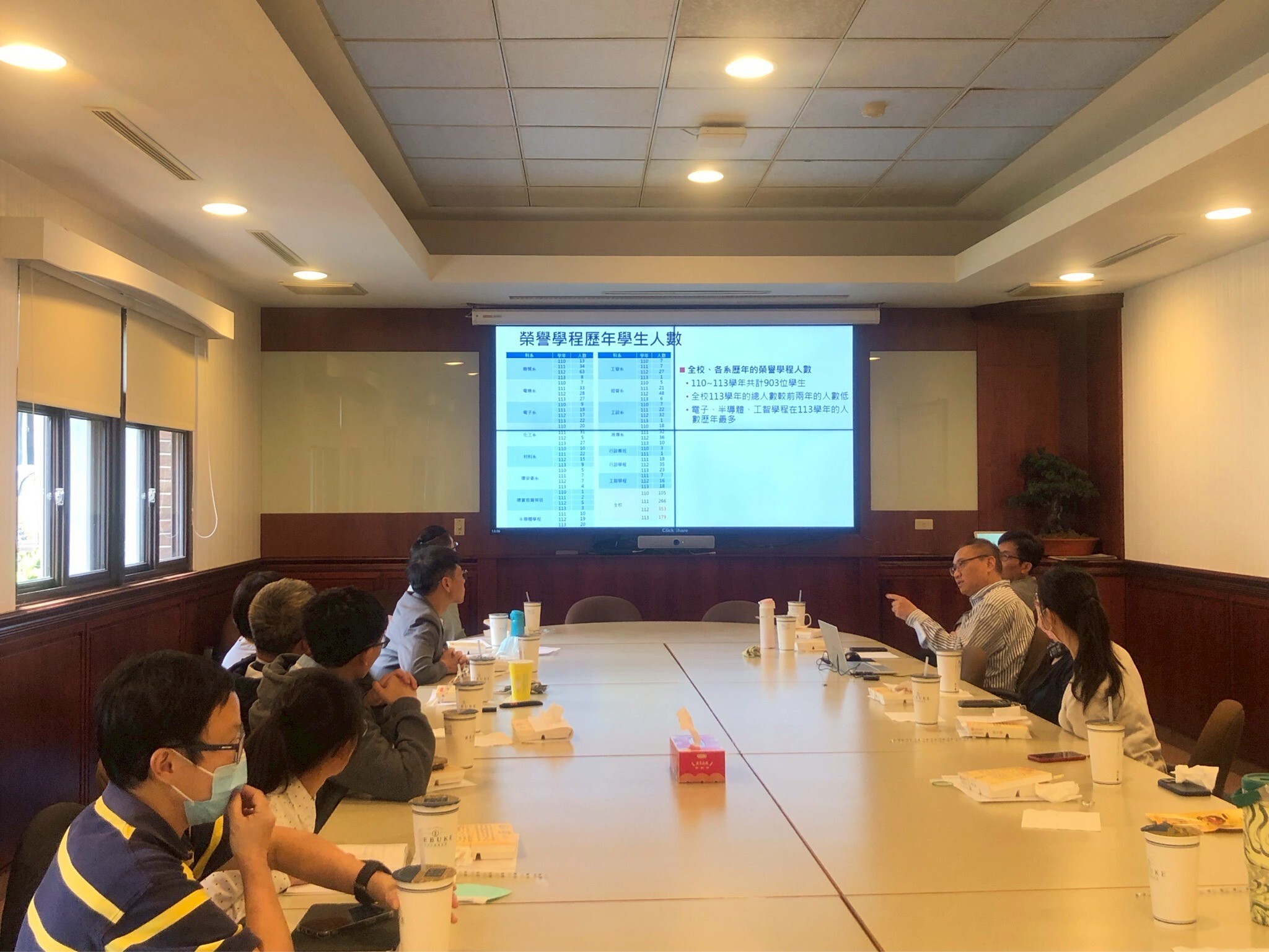【Press release】Tri-University Institutional Research Centers Hold Exchange Meeting, Focusing on Admissions and Talent Selection Analysis.
To promote continuous improvement in university operations and student recruitment strategies, Ming Chi University of Technology, Chang Gung University, and Chang Gung University of Science and Technology jointly held an inter-university sharing event on May 12. Representatives from the institutional research centers of the three universities presented their respective research topics and findings, engaging in in-depth discussions and exchanges throughout the event.
Chang Gung University Report Content :
Report topic : [Analysis of Academic Performance and Graduation Outcomes of Economically Disadvantaged Students Supported by the Higher Education Sprout Project]
- Based on the students from economically disadvantaged backgrounds who received subsidies under Appendix 1 of the Higher Education Sprout Project from 2018 to 2024 (107-113th academic years), the data is categorized by "Student Identity Type" and "Subsidy Type."
- Report the proportion of economically disadvantaged students by educational system and student identity type, as well as their admission pathways.
- Study the dropout rate and extended graduation rate among economically disadvantaged undergraduate students.
- Analyze the proportion of economically disadvantaged undergraduate students who rank in the top 25% of their class within each department, along with the distribution of high and low academic performance by identity type.
- Investigate the post-graduation outcomes of economically disadvantaged students, including employment status and the time taken to find a job:
- Analyze the differences in employment rates between bachelor's and master's degree holders. Most of those not employed are either pursuing further studies or serving in the military. The number of bachelor's and master's graduates still seeking employment remains in the single digits. The majority secured their first job within one month.
- Survey and analyze the average salary one year after graduation for economically disadvantaged students from each college.
Chang Gung University of Science and Technology report content :
Report topic : [ Tracking and Analysis of Semester-by-Semester Student Enrollment Stability from Academic Year 107 to 113]
- The 2025 (114th academic year) university admissions office designated IR (Institutional Research) analysis topics.
- A student retention tracking table (over 8 semesters) was created for cohorts from different admission years.
- The definition of student retention differs between the Ministry of Education and the University Admissions Office. The admissions office requires an 8-semester view; therefore, the report uses "retention rate" to represent stability. Due to challenges in acquiring the actual data, the definition used for calculation in the report differs slightly from the one set by the admissions office.
- The calculation focuses on students with formal enrollment status in full-time bachelor's programs.
- The analysis sample is divided by campus (Linkou and Chiayi) and academic system (2-year and 4-year technical programs). The Linkou campus has the highest student population, and the 4-year program has the largest number of students.
- The semester-by-semester retention rate (%) for full-time programs shows a year-by-year decline over eight semesters for each cohort (excluding transfer students).
- Retention rates (%) vary by academic system: 2-year programs show relatively stable retention, while 4-year programs have greater fluctuations.
- The report analyzes retention rates of students from primary and secondary feeder schools (grouped by region rather than individual schools), comparing retention across full-time bachelor's programs, 2-year programs, and 4-year programs.
- It was found that geographic location influences student withdrawal/dropout rates. Using 4-year program data, the report explores this from three perspectives: students from northern, central, southern, and eastern regions; students from different local areas; and students from the top three source counties/cities. These aspects are examined across the full 4-year program, as well as for the Linkou and Chiayi campuses separately.
Ming Chi University of Science and Technology report content:
Report topic : [Analysis of Learning Effectiveness in the Day Division Four-Year College Honors Program, Academic Years 110-113]
- Report the number of students in honors programs from the 2021 to 2024 (110-113th academic years), as well as the total number of students university-wide in the 2024 (113th academic year).
- Note that the Electronic Engineering, Semiconductor, and Intelligent Manufacturing honors programs had the highest enrollment in the 2024(113th academic year).
- Analyze the leave of absence and withdrawal status of honors program students, highlighting that the 2024 (113th academic year) saw the lowest number of leaves of absence university-wide, with the Industrial Design department having the fewest cumulative leaves.
- As of the 2024 (113th academic year), there have been no student withdrawals university-wide. From 2021 to 2024 (110-113th academic years), only one student withdrew from each of the following programs: Electronic Engineering, Environmental Safety and Health, Environmental Practice Elite Program, and the Facilities Planning and Design Program.
- Analyze the academic performance of honors program students, focusing on the proportion of students ranking in the top 50% of their class, as well as comparing the academic outcomes of honors vs. non-honors students across different admission channels.
- Investigate the continuation of honors program scholarships, based on whether students met the course participation requirements for the Lize Academy international exchange activities.
- It was found that among students who continued to receive scholarships and participated in English-related courses, the majority showed academic improvement, with more students improving than declining in performance.
This exchange meeting not only facilitated learning and discussion among the participating universities but also provided key insights and valuable information to support the improvement and advancement of future university operations. Representatives from the Institutional Research Centers of the three universities jointly agreed to adjust the frequency of the exchange meetings to once per academic year. They unanimously believed that having more time to collect and analyze data would enhance the depth and breadth of institutional research shared across universities, and play a significant role in driving continuous improvements in university operations and student recruitment strategies.
 |
 |
 |
 |








